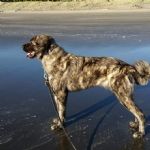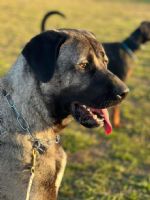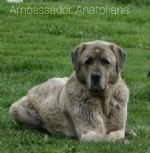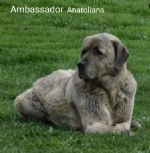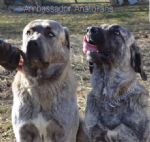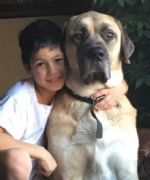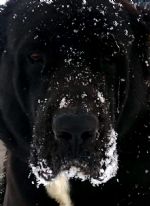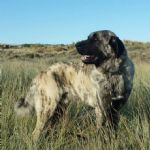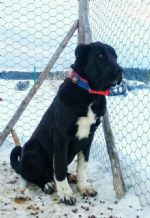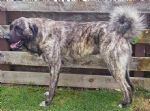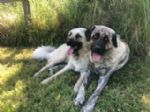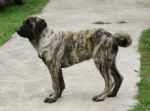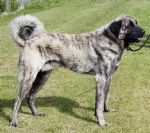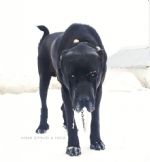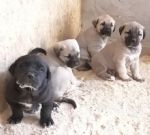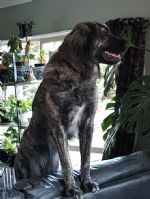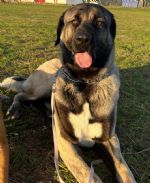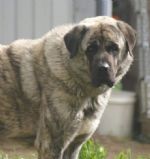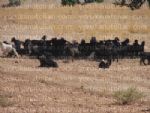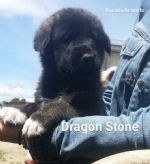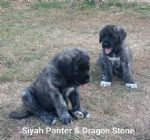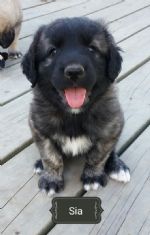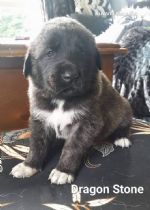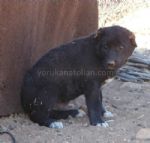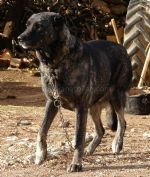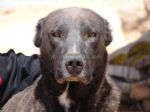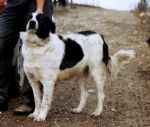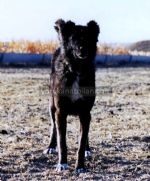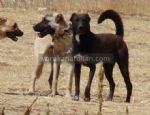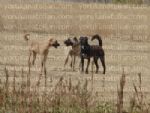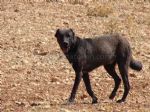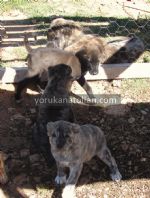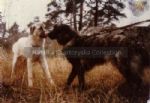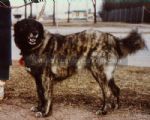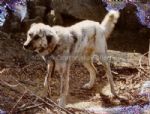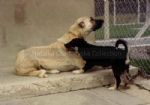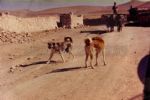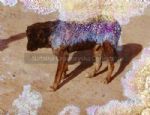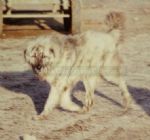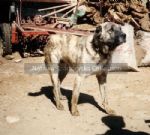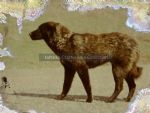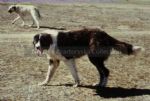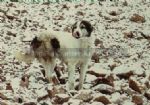ASD Colour Genetics
Black Gene In Anatolian Shepherd Dogs
Most official standards for Anatolian Shepherd dogs accept all colours.
ANKC(Australia)
All color patterns and markings are equaly aceptable
NZKC/DogsNZ (new Zealand)
All colour patterns and markings are equaly acceptable
FCI(Europe)
Color. Cream to dark grey in all nuances.
Since FCI have closed the registry for Anatolian Shepherd Dogs and now have one registry for Kangal shepherd Dogs only, The Kangal Standard does not allow all colours these include base white color and Black. Minimal white on chest, legs & tail tip is allowed, so any Pinto would not be acceptacle. All dogs must have a black mask. Brindle colour while allowed is not desirable. While liver dogs have no black mask, I would assume this colour would also not be acceptable.
UKC
All colors are acceptable
AKC(America)
Color. All colors, cream to dark grey nauances, pinto, base white, blue, brindle and liver are all acceptable.
Base Black is not accepted as a color for Anatolian.
Black Gene is documented to occur in Anatolian Shepherds
In all its variations, black is a realitively rare colour in Coban Kopegi for several reasons.
There are two main Loci in this breed, which control Black as seen in the dogs pictures below.
*On the K Locus, you find dominant Black and also a sort of 'Stuttering' mutation of dominant Black-called Brindle.
These forms of black can be avoided absolutly in a foundation genepool, simply by just choosing not to import dogs that exhibit this type of black in their coats., or promote the gene by intentioanally adding it to your genepool.
For many decade, people avoided importing brindles, and until recently, have avoided importing any black dogs. while these choices understanably personal, others may be misinformed and unaware that black exists in the genetics of the Native Working Anatolians in various dominant and recessive forms. These choices have resulted in the breed standard being overruled with personal beliefs or preferences, which are prejudicial to the gene pool and historical accuracy.
* The other type of Black is Recessive Black. Recessive Blacks are on an A Locus. There are two main varieties of recessive black in the Agoti Locus. Tan Point (maerked like a Rottweiller with Tan accents) and recessive black , where the dog is an overall black.
Recessive Blacks can sneak up on you after generations of ;Pure Breeding' fawn dogs. Thats the nature of recessives; You dont know which dogs carry them until that sub-population begins to increase so there are more chance of recessive pairing up. For example, this can happen in Labrador Retrievers. In Anatolians, some Tan points have began to appear.
* Note; PROBLEM, AKC dog registration forms do not provide a place to accept black as body color, but with knowledge and more understanding of the breed and its genetics the issue will hopefully in the near future be corrected.
Dilute D Locus in dogs
1,2,3 Blue, Lilac,Champagne.
The dilute gene effects the eumelanin and phaeomelanin pigments. These pigments control the colour of the dog. Black to blue, brown to lilac and yellow to champagne dogs are all affected by the D-Locus. However the affect of the dilution are more pronounced in black dogs. A diluted black dog becomes knowen as a blue dog. The gene is recessive so both parants must carry the gene, d/d. Because the phonetype is recessive a dog can be a carrier of the gene and still apear to have a normal coat colour. These dogs can pass on the full colour gene or the dilute gene to the offspring.
Dilute Liver B Locus in dogs
The liver colour is caused by the eumelanin (black) pigment by the B locus, the gene that causes Liver is recessive so BB or B,b Dog has a normal pigment only a bb dog is liver.

